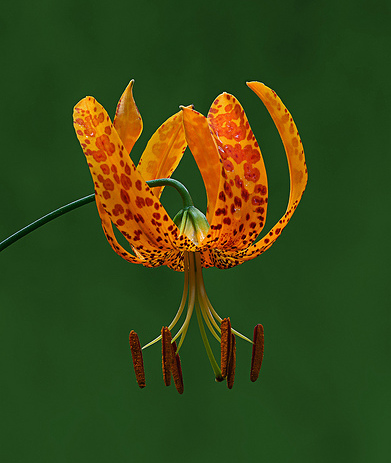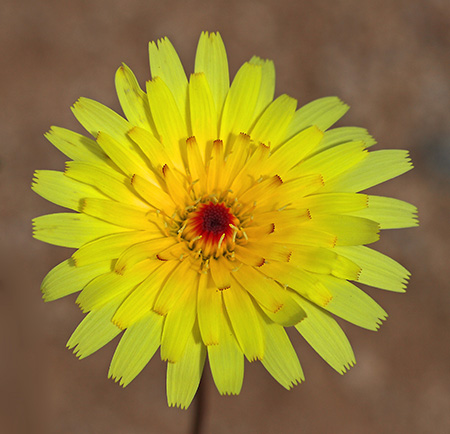
Wildflowers display some of the most brilliant colors found in nature. And, for good reason–they’re fiercely competing with each other to attract their pollinating friends: the insects and a few species of birds.
However, their brilliant colors often make them difficult to photograph. Have you ever come home with a full memory card only to find out that all those beautiful flower photos you took have blown out highlights, washed out colors, and harsh shadows?
Well, there’s a secret to avoiding all these problems, and I’m going to tell you what it is. Are you ready?
The only way to get absolutely perfect light for your wildflower photographs is to photograph them on an overcast day. The thicker the clouds, the better. And, if it just rained–perfect.
The clouds act as a natural diffuser of the Sun’s light, so when there’s an overcast sky, you’ll get the most balanced natural light possible.
On the other hand, when the Sun is shining brightly on a clear day, the light will be severely harsh, and result in blown out highlights. Since the colors of wildflowers are practically all highlights, this is a huge problem!
Not only will you get blown out highlights, but you will also get harsh shadows, which are almost just as bad! Here’s a photo that illustrates both of these problems:

The red arrow points to the blown out highlights, and the blue is pointing to the harsh shadows–both created from direct sunlight.
There’s another way to get diffused sunlight, by building a little box and putting a shower curtain over it–and then photographing the flower inside this “light box.” However, you won’t get as good results using this method, as you would with a thick overcast sky.
What if you can’t wait for an overcast sky? Or, maybe they just occur so rarely in your area? Well, the next best thing you can hope for is a partly cloudy day. Then, wait until the sun goes behind a cloud before you shoot your photos. This won’t provide as good a diffusion as a completely overcast sky, but it will still get you great results.
For example, the wildflowers of the Mojave Desert bloom for only a few weeks, and this desert rarely has an overcast day. So, in order to take the photo below, of a Desert Dandelion, I just waited until a few clouds blocked the Sun.

And, if there’s never, ever, an overcast or cloudy day in your area… then, your last option is to photograph flowers during sunrise or sunset.
The photograph at the beginning of this post was taken on an overcast day, immediately after a rainstorm, at Topanga State Park, in California. The flower is known as a Columbia Lily (and sometimes also called a Tiger Lily).
Hi. I once projected shade on a flower and the result was acceptable, not as an overcast day but acceptable.
This information is of a huge help to me Steve. I’m new to DSLR photography and I try to “absorb” all the information I can. I read & read about this type of photography but it seems the more I read the less I seem to understand. But everything you’ve told us here is very easy for me to “absorb” & understand.
Thank you for explaining things in English. You certainly have a dedicated follower here…..
Stephen – Thanks a lot for your nice comment. I’m glad you found this post useful 🙂
hai steve,
I l’d like to study more about photography.I truly love to travel a lot and study diffrent culture,different styles,more over deal with different peoples from various countries by the help of camera.This my biggest passion in life.what can i do.can you give me some suggetions?thanks.
All your tips are great for a learner like me. They help me a lot in experimenting. I am a novice and need a Guru like you.
I have found that all of Steve Berardi’s tips have been very helpful. Thank you Steve…..